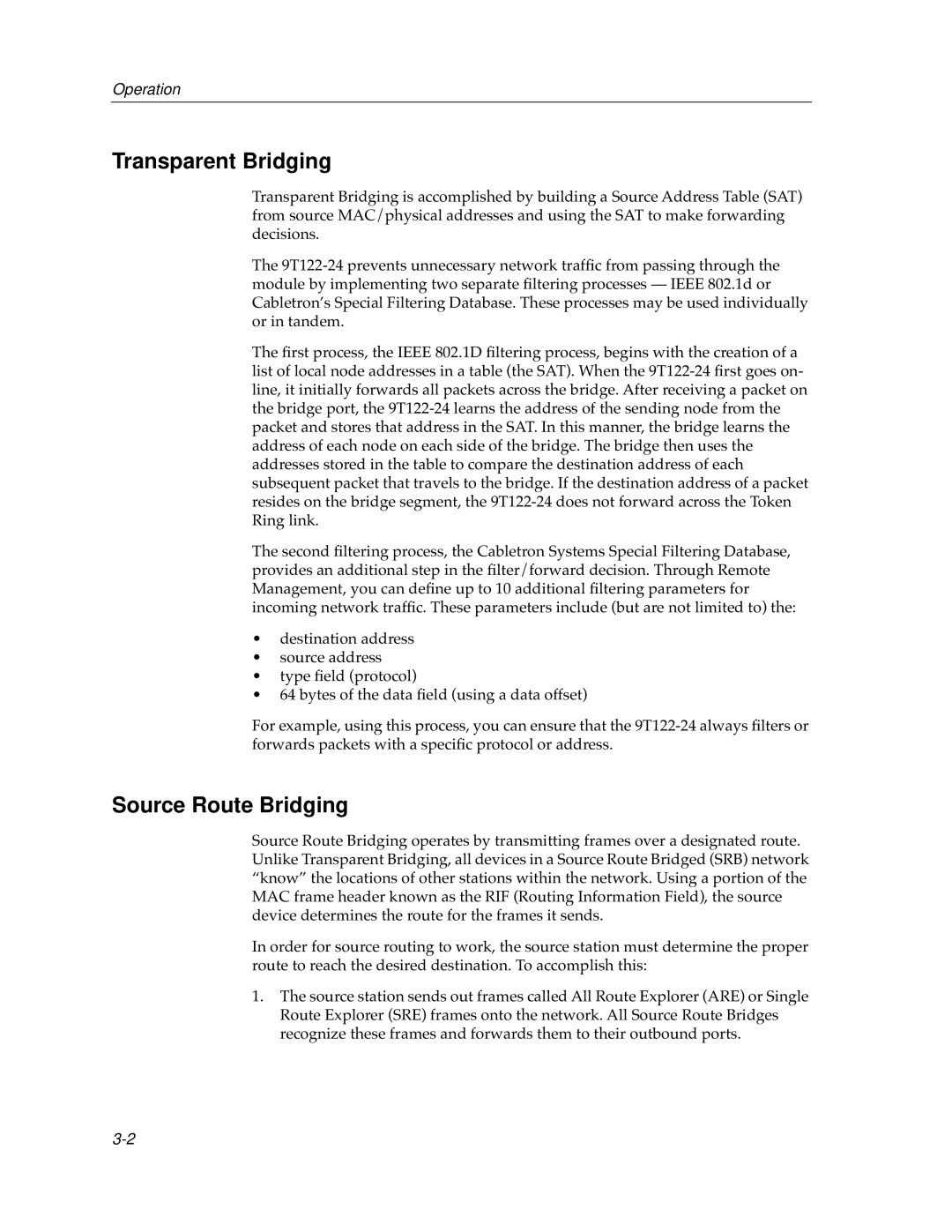Operation
Transparent Bridging
Transparent Bridging is accomplished by building a Source Address Table (SAT) from source MAC/physical addresses and using the SAT to make forwarding decisions.
The
The first process, the IEEE 802.1D filtering process, begins with the creation of a list of local node addresses in a table (the SAT). When the
The second filtering process, the Cabletron Systems Special Filtering Database, provides an additional step in the filter/forward decision. Through Remote Management, you can define up to 10 additional filtering parameters for incoming network traffic. These parameters include (but are not limited to) the:
•destination address
•source address
•type field (protocol)
•64 bytes of the data field (using a data offset)
For example, using this process, you can ensure that the
Source Route Bridging
Source Route Bridging operates by transmitting frames over a designated route. Unlike Transparent Bridging, all devices in a Source Route Bridged (SRB) network “know” the locations of other stations within the network. Using a portion of the MAC frame header known as the RIF (Routing Information Field), the source device determines the route for the frames it sends.
In order for source routing to work, the source station must determine the proper route to reach the desired destination. To accomplish this:
1.The source station sends out frames called All Route Explorer (ARE) or Single Route Explorer (SRE) frames onto the network. All Source Route Bridges recognize these frames and forwards them to their outbound ports.
